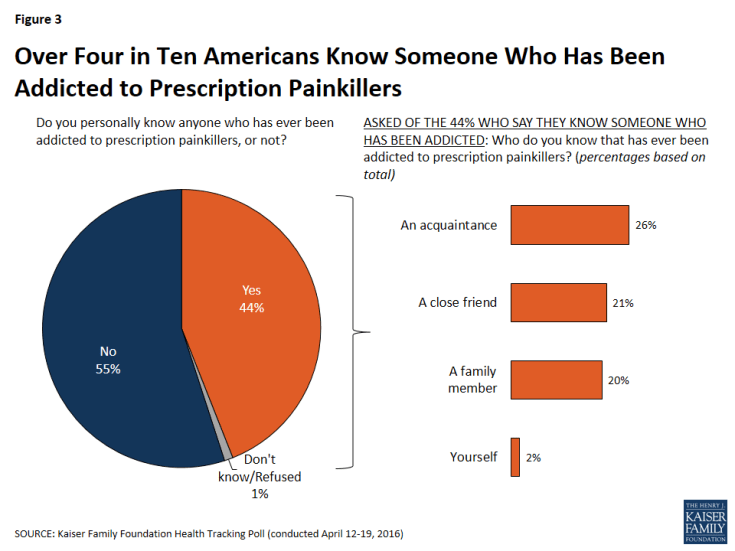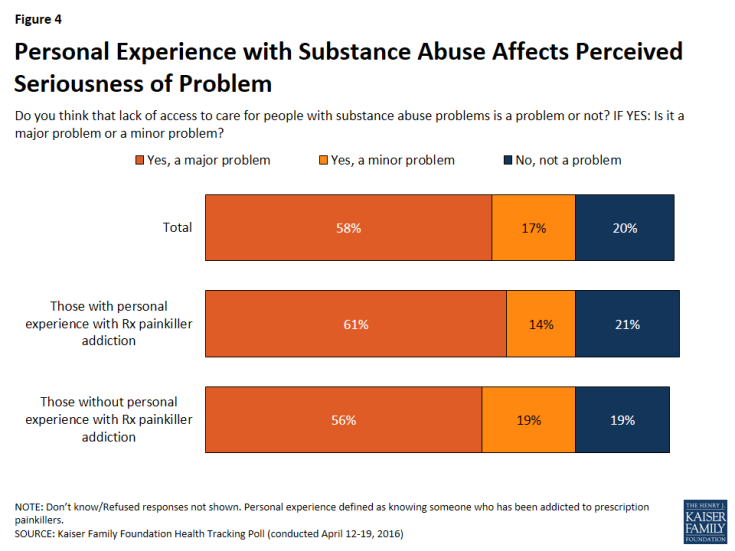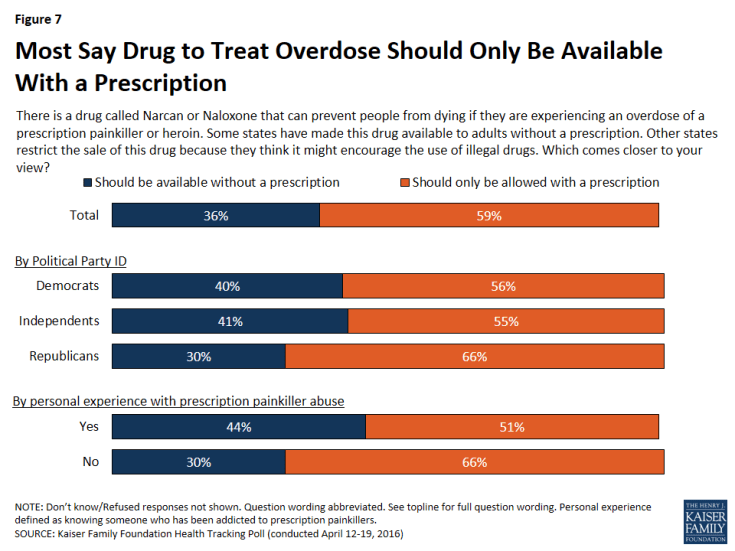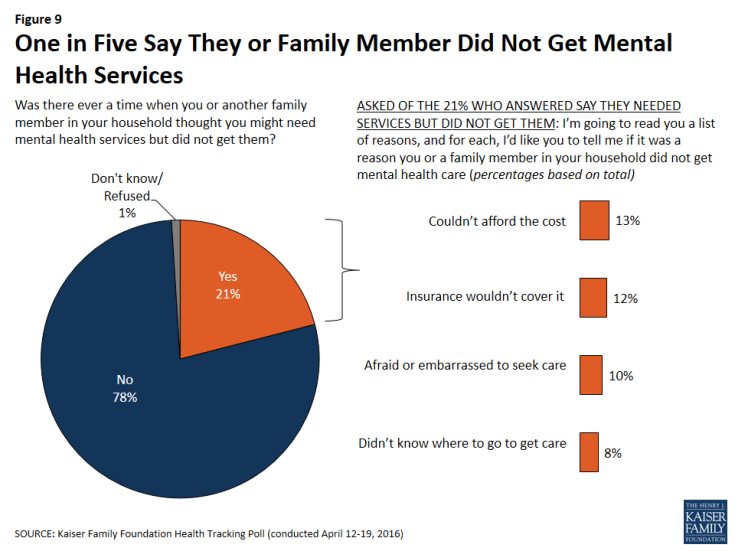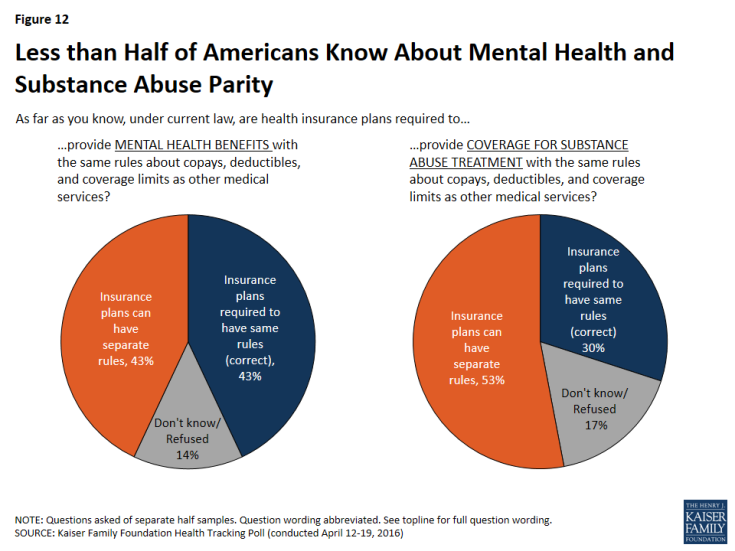Kaiser Health Tracking Poll: April 2016
The April Kaiser Health Tracking Poll examines public opinion on the severity of health problems in the U.S. and takes a closer look at attitudes towards current health problems; including access to substance abuse treatment and mental health services.
KEY FINDINGS:
- Cancer tops the public’s list of extremely serious health problems in the U.S., followed by contaminated drinking water, heroin abuse, two topics that have garnered media attention recently.
- Although heroin technically falls into the same opioid family as prescription painkillers, Americans perceptions of the seriousness of addiction to these two drugs as well as the discrimination faced by those who use them are different.
- Forty-four percent say they personally know someone who has been addicted to prescription painkillers; a majority of Americans say that lack of access to care for people with substance abuse issues is a problem.
- A quarter report that a doctor or health professional has told them or another family member living in their household that they have a serious mental health condition; 21 percent report that there has been a time when they or another family member thought they might need mental health services but did not get them.
- Many Americans are unaware of the legal requirement that insurance plans must have the same rules for mental health benefits and substance abuse treatment as other medical services.
Serious Health Problems in the U.S.
When given a list of health issues facing the country, cancer tops the list, with 43 percent saying it is an extremely serious problem. In the midst of news stories about the contamination of the water in Flint, Michigan, just over one-third (35 percent) rate contaminated drinking water as an extremely serious problem. Similar shares name heroin abuse (35 percent), lack of access to mental health care (33 percent) and obesity (33 percent) as extremely serious problems. About three in ten say diabetes (31 percent), abuse of strong prescription painkillers, sometimes called opioids (28 percent), and heart disease (27 percent) are extremely serious problems, and about a quarter say the same for environmental contamination (26 percent) and lack of access to health care (25 percent). At the bottom of the public’s list are lack of access to affordable healthy food (21 percent) and alcohol abuse (19 percent).
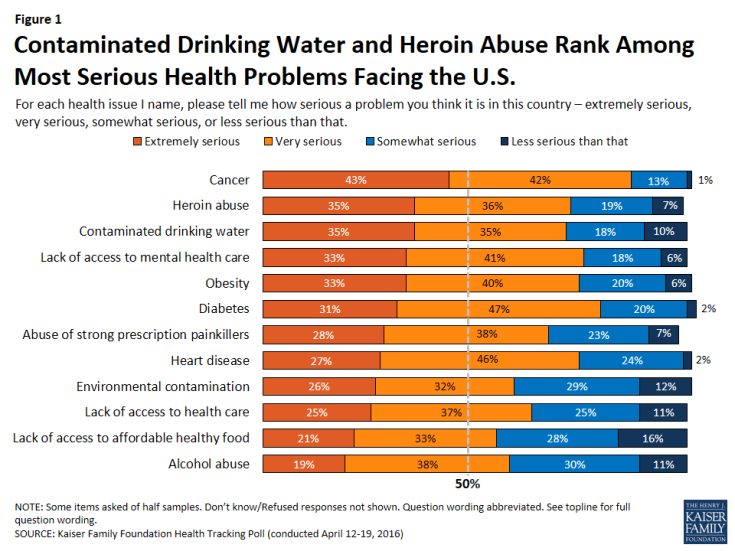
Figure 1: Contaminated Drinking Water and Heroin Abuse Rank Among Most Serious Health Problems Facing the U.S.
A Closer Look at Substance Abuse
More than one-third of Americans (35 percent) say heroin abuse is an extremely serious problem in the U.S., compared to 28 percent who say the same about abuse of strong prescription painkillers, and less than one in five (19 percent) who say alcohol abuse is an extremely serious problem.
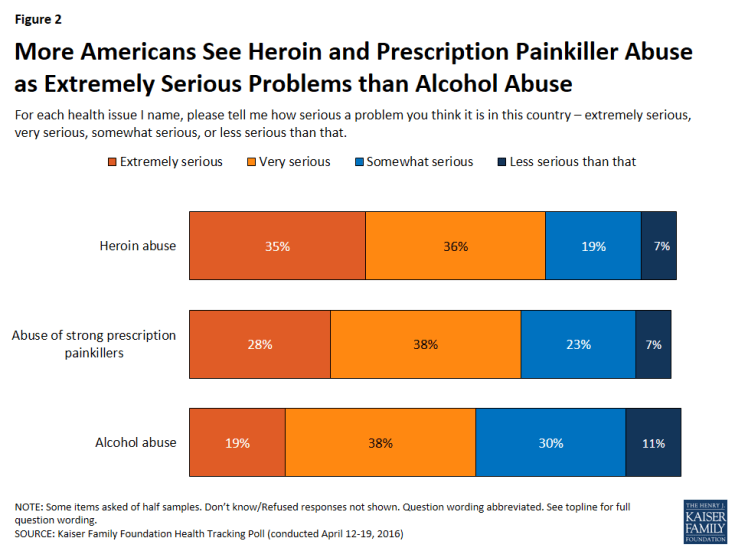
Figure 2: More Americans See Heroin and Prescription Painkiller Abuse as Extremely Serious Problems than Alcohol Abuse
Personal Experience with Prescription Drug Addiction
Prescription drug addiction impacts nearly half of the public on a personal level. Forty-four percent say they personally know someone who has been addicted to prescription painkillers, with about a quarter (26 percent) saying the person they know is an acquaintance, 21 percent saying a close friend, 20 percent saying a family member, and 2 percent saying themselves.
Access to Care
A majority of Americans say that lack of access to care for people with substance abuse issues is a problem (75 percent), including 58 percent who say it is a major problem.
Perceptions of Heroin Abuse Compared to Prescription Painkiller Abuse
Although heroin technically falls into the same opioid family as prescription painkillers, the overall perception of the seriousness of addiction to these two drugs as well as the discrimination faced by those who use them is different. Just over one-third of the public (35 percent) say heroin abuse is an extremely serious problem, while 28 percent say opioid prescription painkiller abuse is. Additionally, about half of the public (52 percent) believe that people who are addicted to heroin face a lot of prejudice and discrimination in this country today, compared to just 38 percent who say people addicted to prescription painkillers do.
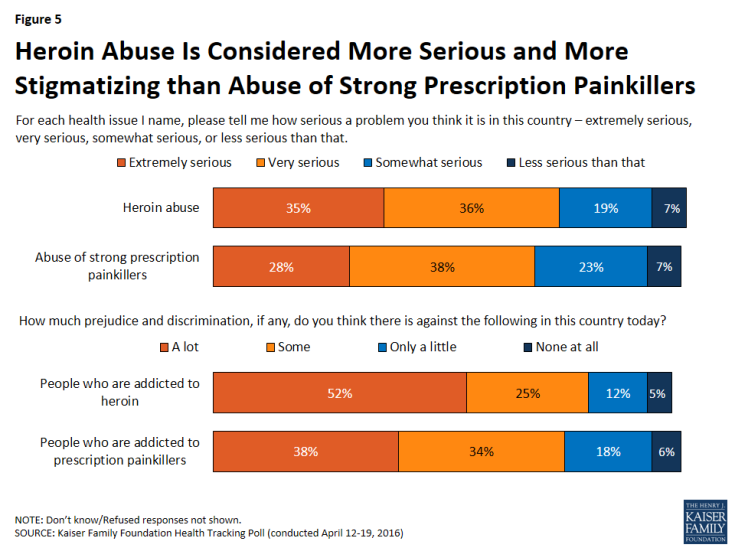
Figure 5: Heroin Abuse Is Considered More Serious and More Stigmatizing than Abuse of Strong Prescription Painkillers
Actions to Fight The Increasing Rate of Prescription Painkiller Abuse
The subject of prescription painkiller abuse has gained attention from journalists and policy makers recently, most notably when President Obama announced $1.1 billion in additional funding along-side an array of new measures to fight the opioid addiction.1 Despite this, a majority of the public says the federal government is not doing enough to combat the recent increase in the number of people who are addicted to prescription painkillers (66 percent) or heroin (62 percent). Large shares say other groups aren’t doing enough to combat the problem, including their state governments (67 percent and 61 percent, respectively), doctors who prescribe prescription painkillers (63 percent and 56 percent), and particularly, individuals who use prescription painkillers or heroin (73 percent and 77 percent). Far fewer say police officers are not doing enough to combat painkiller abuse (37 percent) and heroin abuse (36 percent).
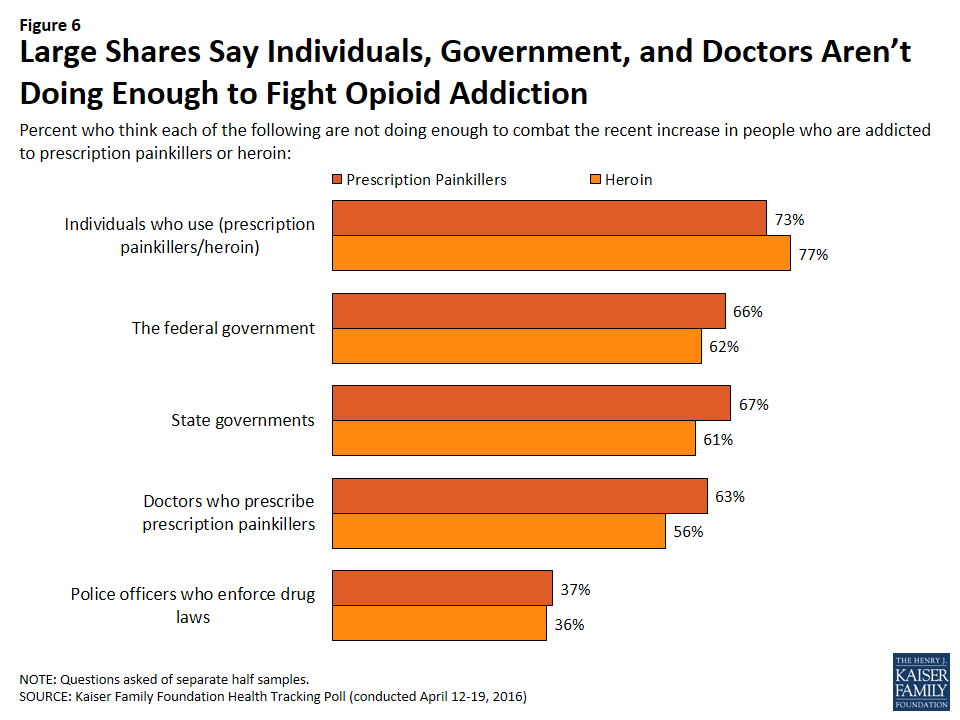
Figure 6: Large Shares Say Individuals, Government, and Doctors Aren’t Doing Enough to Fight Opioid Addiction
The poll also assesses the public’s views on expanding access to a drug called Narcan, or Naloxone, which can prevent people from dying if they are experiencing an overdose of a prescription painkiller or heroin. Currently, some states have made this drug available to adults without a prescription while others restrict the sale of this drug because they think it might encourage the use of illegal drugs. Nearly six in ten Americans (59 percent) think that these drugs should only be allowed with a prescription, while just more than a third (36 percent) think that it should be available without one. The share in favor of access without a prescription is significantly higher among individuals who report a personal experience with prescription painkiller abuse than those without (45 percent vs. 30 percent). Also, Democrats and independents are more likely to favor access without a prescription and Republicans are (40 percent and 41 percent vs. 30 percent).
Policy Efforts to Curb Prescription Painkiller Abuse
The public thinks that a variety of policy efforts would be effective in reducing the abuse of prescription painkillers. Over eight in ten think that increasing pain management training for medical students and doctors (88 percent), increasing access to addiction treatment programs (86 percent), public education and awareness programs (84 percent), increasing research about pain and pain management (83 percent), and monitoring doctors’ prescription painkiller prescribing habits (82 percent) would be at least somewhat effective ways to reduce the number of people abusing prescription painkillers. Smaller shares think that encouraging people who are prescribed painkillers to dispose of any extras once they are no longer medically necessary (63 percent), reducing the social stigma around addiction (60 percent), and putting warning labels on prescription drug bottles that explain the risk of addiction (49 percent) would be at least somewhat effective.
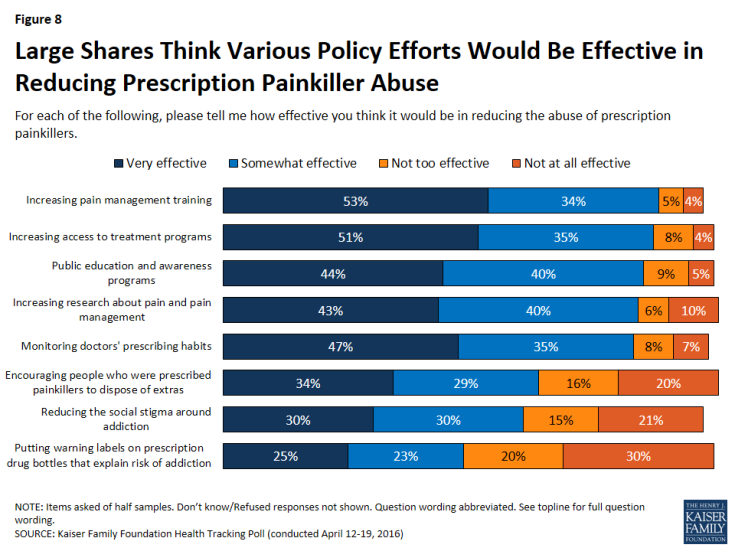
Figure 8: Large Shares Think Various Policy Efforts Would Be Effective in Reducing Prescription Painkiller Abuse
A Closer Look at Mental Health
Personal Impact of Mental Health
A quarter report that a doctor or health professional has told them or another family member living in their household that they have a serious mental health condition, such as depression or anxiety. Furthermore, about two in ten (21 percent) report that there has been a time when they or another family member thought they might need mental health services but did not get them. Individuals say they didn’t get mental health care because they couldn’t afford the cost (13 percent), insurance wouldn’t cover it (12 percent), there were afraid or embarrassed to seek care (10 percent), or they didn’t know where to go to get care (8 percent).
Perceptions About Access to Care for Those with Mental Health Conditions
Nearly nine in ten (87 percent) think that lack of access to care for people with mental health conditions is a problem, including 73 percent who say it is a major problem.
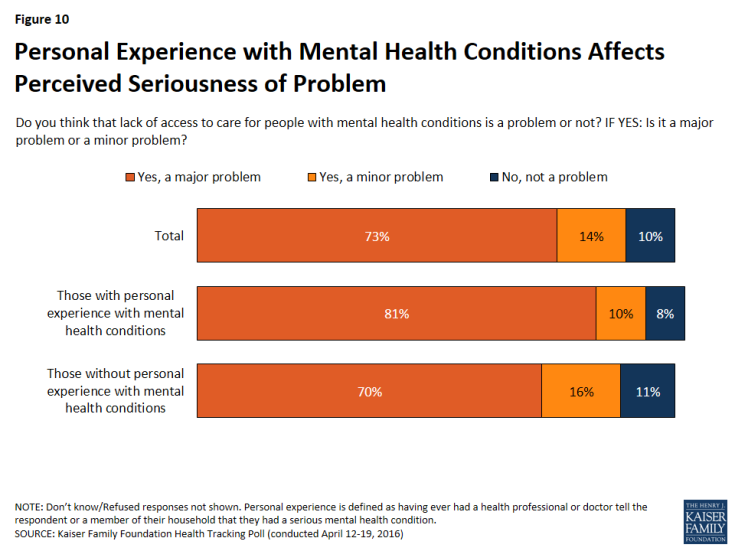
Figure 10: Personal Experience with Mental Health Conditions Affects Perceived Seriousness of Problem
Discrimination and Mental Health Conditions
Substantial shares of the public think that people suffering from mental health conditions experience at least some prejudice and discrimination in this country today. About four in ten (42 percent) say those who suffer from depression face a lot of discrimination, and fewer (32 percent) say the same about those who suffer from anxiety.
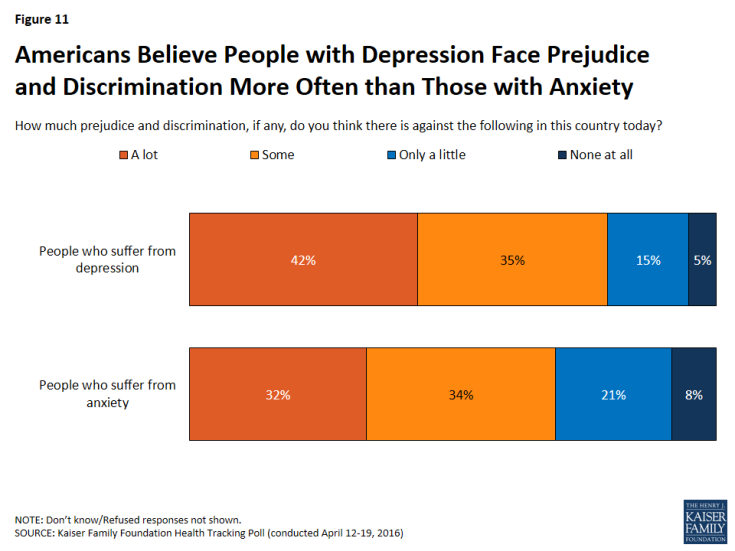
Figure 11: Americans Believe People with Depression Face Prejudice and Discrimination More Often than Those with Anxiety
Substance Abuse and Mental Health Parity Laws
Policy makers have enacted legal protections aimed at addressing access to care for individuals with substance abuse problems and serious mental health conditions. The Mental Health Parity and Addiction Equity Act, ushered in as one of the many provisions of the Affordable Care Act, legally requires insurance plans to have the same rules for mental health benefits and substance abuse treatment as other medical services.2 However, many Americans remain unaware of these requirements. About four in ten (43 percent) know that health plans must have the same rules for mental health coverage, while an identical share thinks insurance companies can have separate rules and 13 percent don’t know. Fewer (30 percent) are aware that the requirement applies to substance abuse treatment, while over half (53 percent) incorrectly say insurance plans can have separate rules for substance abuse benefits and 15 percent don’t know. Individuals with personal connections to substance abuse and mental health conditions are no more likely than those without personal connections to know about the legal protections around such treatments.

